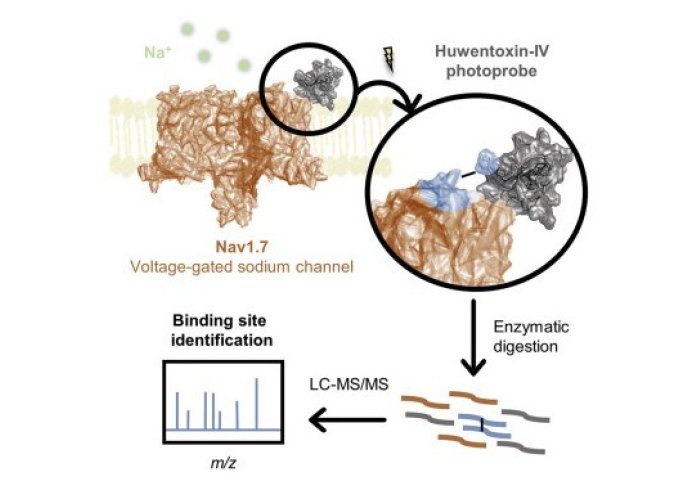Probes based on spider toxin help in the development of painkillers

Congratulations to recent group alumni Feny Tzakoniati whose PhD work has been published in Cell Chemical Biology
Feny completed her PhD in 2018 as part of the Institute of Chemical Biology Doctoral Training Centre and worked in collaboration with Chris Koth and Jian Payandeh from the Department of Structural Biology at Genentech on this work
The new publication focuses on the identification of binding interactions between a toxin and a voltage-gated sodium channel (Nav). Navs are involved in the signalling pathway in pain-sensing neurons and are an interesting target for the development of new pain relief medication. Certain peptides produced by venomous animals are known to selectively inhibit a subgroup of these channels, Nav1.7, although the mechanism behind this phenomenon has previously been unknown and difficult to elucidate.
Feny developed six potent photoprobes based on Huwentoxin IV, a known spider toxin, and used a photocrosslinking and tandem mass spectrometry workflow to determine specific binding interactions between the toxin and the ion channel. This work details an approach that will enable elucidation of the interactions between many other toxins and Nav channels and could therefore pave the way for further progress in the development of pain medication.
Congratulations Feny!
Image courtesy of Cell Press
Article text (excluding photos or graphics) © Imperial College London.
Photos and graphics subject to third party copyright used with permission or © Imperial College London.
Reporter
Jennie Hutton
Department of Chemistry